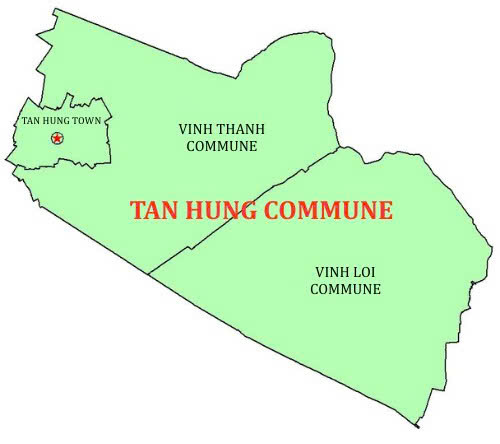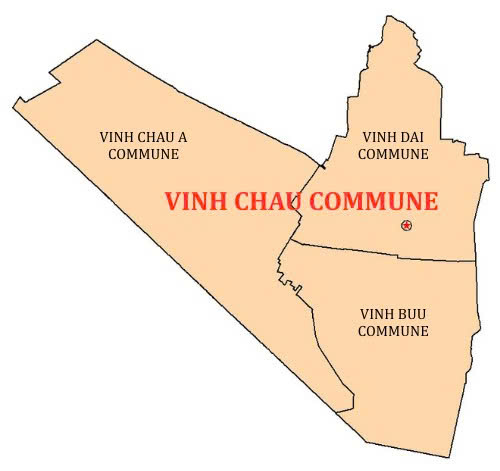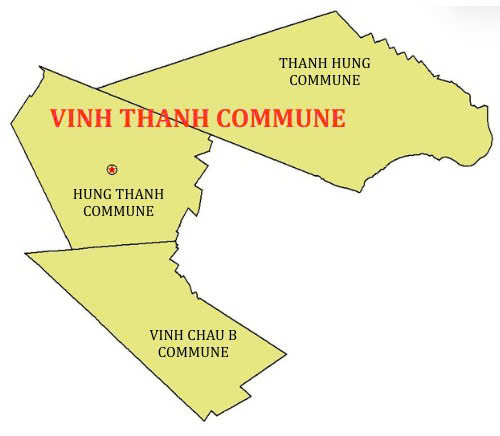Tan Hung commune – A nucleus for sustainable agricultural development

Tan Hung commune was established through the merger of three localities: Vinh Thanh, Vinh Loi, and Tan Hung town. Spanning more than 107 square kilometres and home to over 18,000 residents, the commune not only meets all criteria for administrative scale but also possesses favourable natural and social conditions for dynamic and sustainable development. As the new administrative centre, it is poised not only to coordinate governance but also to become an economic and trade-services hub – a fulcrum for the development of the whole region.
Blessed with ideal conditions for agriculture, the commune also faces challenges from flooding, tidal surges, and saltwater intrusion – issues that demand long-term vision and adaptive resilience. Yet it is through hardship that the people here have forged a spirit of resilience, marked by perseverance, diligence, and an unwavering aspiration to rise—much like the rice crops that brave the floods and yield heavy grains, embodying the commune’s enduring identity.
Beyond agricultural production, Tan Hung is aiming for a modern and sustainable future: advancing high-tech farming, improving education and healthcare, and building a people-centric administration. With increasingly complete infrastructure and an inviting investment climate, the commune is being positioned as a bridge between tradition and modernity, attracting both human and capital resources.
Vinh Chau commune – Exploiting the potential of high-tech agriculture and urban growth

Vinh Chau commune was formed through the merger of three former communes: Vinh Dai, Vinh Buu, and Vinh Chau A. Covering a natural area of 144.28 square kilometres—nearly five times the standard size of a commune-level administrative unit—Vinh Chau stands out as one of the largest communes in the region. This expansive space is ideal for the development of high-tech agriculture, planned specialised farming zones, and systematic residential expansion.
However, the commune's current population of just over 13,000 falls short of the population criteria, reaching only 81%. This highlights a major challenge in terms of human resources and population growth – but also presents an opportunity to formulate policies to attract residents, expand infrastructure, and gradually develop concentrated residential clusters tied to modern production, paving the way for sustainable growth.
Located in the low-lying Dong Thap Muoi region, with flat terrain and an extensive network of canals and streams, Vinh Chau has many natural advantages for wet-rice farming. Fertile alluvial soil, a stable tropical monsoon climate, and abundant water from the Vam Co Tay River create favourable conditions for key crops and aquaculture.
However, the early arrival and slow recession of floods, along with climate change and the risk of saltwater intrusion, present urgent demands for investment in irrigation infrastructure, innovation in farming practices, and enhanced resource management—turning challenges into opportunities for sustainable development.
As a key agricultural zone, Vinh Chau is tasked not only with ensuring local food security but also with pioneering new development models – from organic farming and value chain production to agri-tourism tied to cultural heritage conservation, creating diverse added value.
Vinh Thanh commune – Towards sustainable agriculture and eco-tourism

Vinh Thanh commune was established through the merger of three former communes: Vinh Chau B, Hung Thanh, and Thanh Hung. Spanning 118.68 square kilometres and home to 12,610 residents, Vinh Thanh has agriculture at its heart—with rice cultivation taking the lead. Yet its potential reaches far beyond. Vast expanses of land and abundant water resources lay the groundwork for crop diversification, aquaculture, and even the development of eco-tourism.
Benefiting from modern transport, electricity, and water infrastructure, the commune can easily connect with neighbouring areas and expand market access for local produce. Additionally, its cultural diversity – including Kinh, Khmer, and Hoa communities with festivals such as the Ky Yen celebration – creates a unique appeal, promising opportunities for cultural tourism and new income streams.
Vinh Thanh is embracing high-tech agriculture, aiming to break the rice monoculture and raise living standards. Policies that encourage investment, entrepreneurship, and population growth will be key. At the same time, climate change adaptation and environmental protection remain priorities for sustainable development. With growing support, the commune is drawing a new portrait of rural prosperity, where land potential and human capital converge to affirm its place in the region.
Thus, the merger of Long An’s 60 communes and wards (prior to July 1, 2025) represents not just a mere administrative adjustment but a comprehensive restructuring aimed at a more modern and efficient governance model.
From July 1, 2025, with the official merger of Long An and Tay Ninh into the new Tay Ninh province, 60 former communes and wards of Long An and 36 of Tay Ninh will together form a new, stronger administrative entity. This new Tay Ninh will embody the combined strengths and values of both regions, enabling it to go further in the ongoing journey of development and renewal./.
By Nhat Quang- Translated by Tuong Vinh
Source: https://baolongan.vn/ky-nguyen-vuon-minh-ky-vong-va-phat-trien-tren-nhung-vung-dat-moi-bai-cuoi--a197885.html
 Hanoi Convention signing ceremony marks resounding success: official
Hanoi Convention signing ceremony marks resounding success: official





